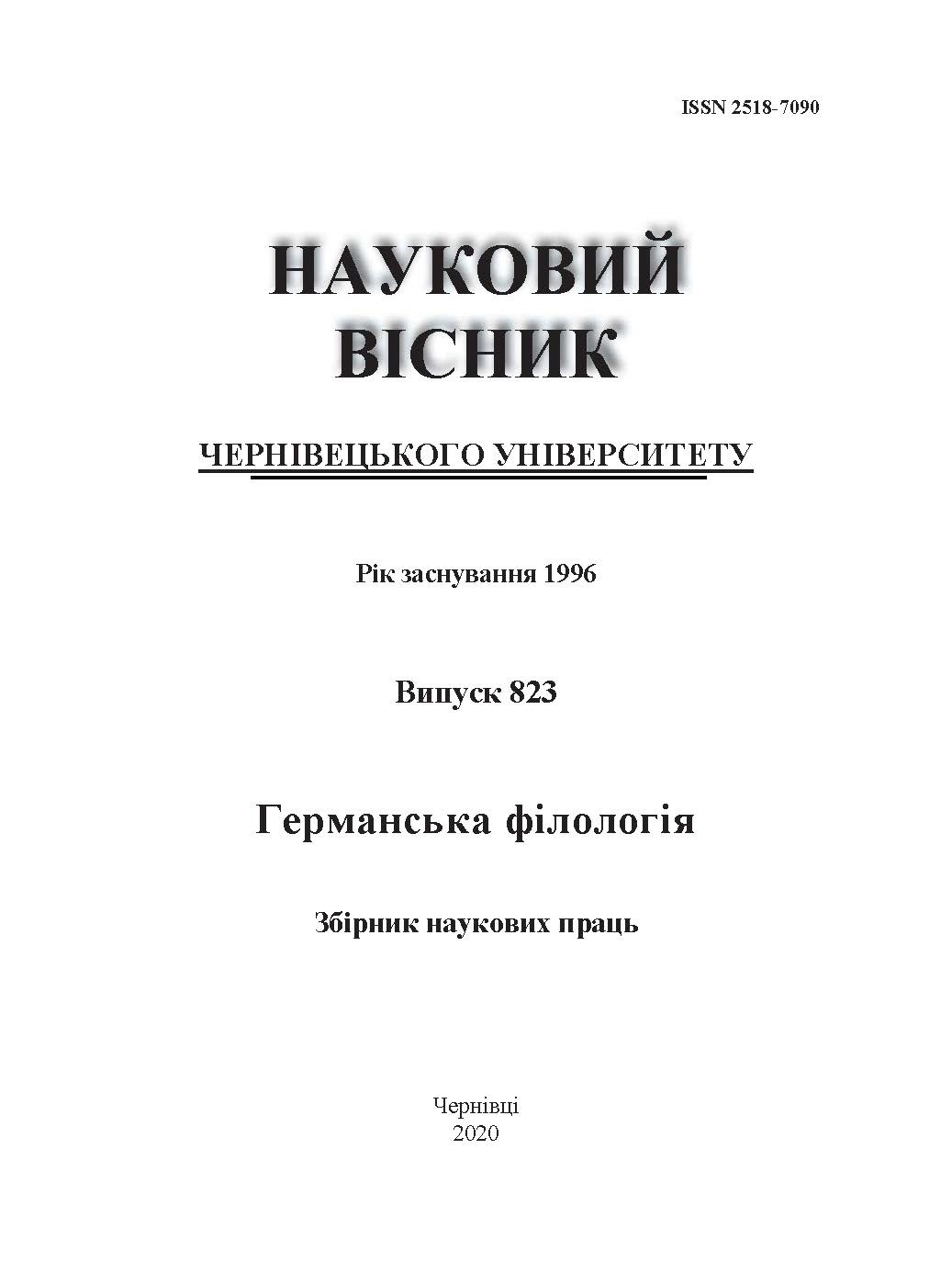ЗВУКОСИМВОЛІЧНІ ОСОБЛИВОСТІ ФОНЕСТЕМНИХ ДІЄСЛІВ МОВЛЕННЯ НІМЕЦЬКОЇ МОВИ
DOI:
https://doi.org/10.31861/gph2020.823.166-172Abstract
The article explores the symbolic properties (meanings) of the initial combinations of consonants (phonesthemes) in modern German by the example of the analysis of the phonesthemic lexicon, which denotes the lexemes representing “speech”, which, in their morphological structure, are verbs.
The symbolic properties of phonesthemic lexicon were studied using component and statistical methods, namely component analysis of the corresponding lexicon definitions; chi-square criterion, and the coefficient of mutual collocability.
The objective symbolic meanings of the initial phonesthemes, investigated using the component methodology, illustrate a statistically significant phonetic-semantic relation. It has been established that 22 out of 29 German phonesthemes represent the sound-symbolic meaning of speech. Quantitative research methods enabled us to find out that 14 phonesthemes (br-, bl-, fl-, kl-, kr-, kn-, pl-, qu-, ʃv-, ʃt-, ʃpr- ʃp-, ʃn-, ʃm-) demonstrate statistically significant relation to the meaning of speech. Grammatical category that possess the strongest potential for associative-symbolic meanings in the category “speech-act verbs” are verbs: sprechen (χ2=28,95; K=0,1), flüstern (χ2=8; K=0,05), plaudern (χ2=121,7; K=0,16), brabbeln (χ2=38; K=0,11), brüllen (χ2=35; K=0,11), schwatzen (χ2=7,3; K=0,05) stottern (χ2=17,3; K=0,08).
The study of phonesthemes of speech-act verbs also revealed predominance of the phonemic clusters of consonants with [ʃ] as a lead phoneme whose phonesthemic lexicon represents value “chatting, blether” and “screen, scream” (ʃv-, bl-, pl-, kv-, ʃr-, ʃn-, ʃp-, ʃl-, kl-kr).
The study of the symbolic and functional properties of the initial phonesthemes of the relevant phonesthemic lexicon has taken into account psycholinguistic and statistical techniques based on lexicon material and various texts.





